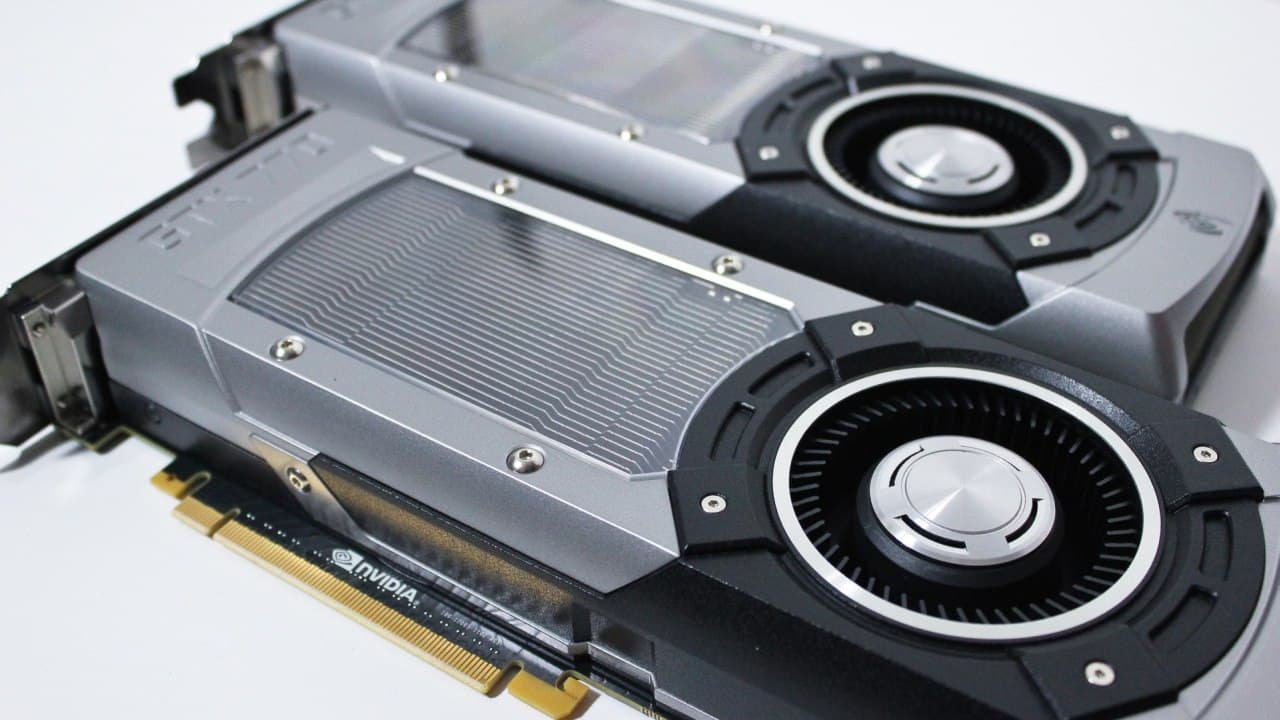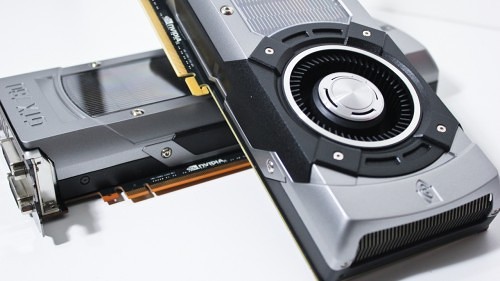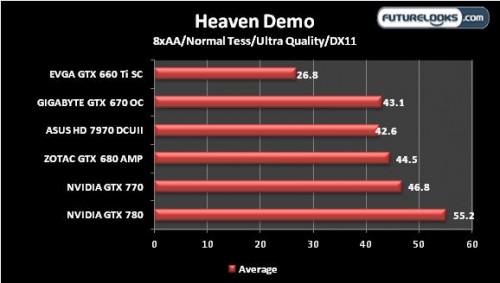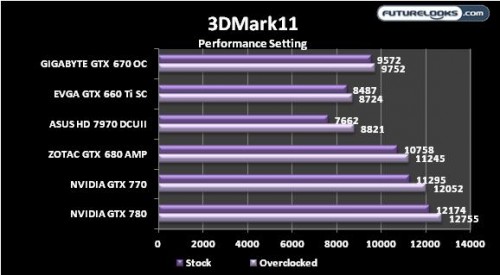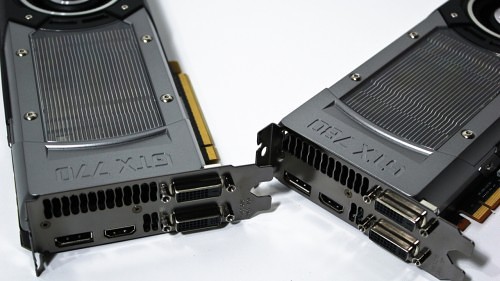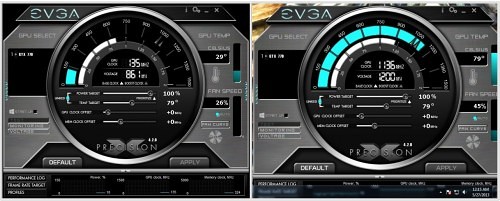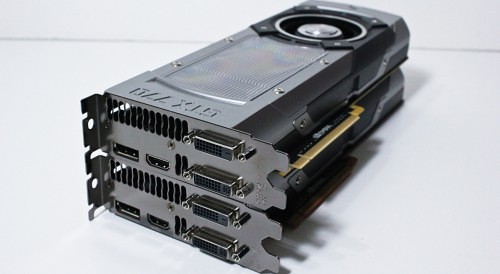Synthetic Benchmarks
While real world gaming benchmarks are essential, they sometimes don’t provide the cross reference one needs to compare their own current equipment. We’ve chosen two more benchmarks that are both free and provide you a good snapshot of how this card will upgrade your experience compared to what you have right now.
Heaven Demo
Heaven Demo requires lots of GPU resources. It also reveals when it’s time to upgrade in some ways especially if your GPU cooler is starting to fail because it can really push the temperatures. Here, the GTX 770 flies through comfortably after several benchmarks, but the GTX 780 remains king after the cards cool down.
3DMark 11
The 11K score here is to be expected. Unfortunately, there wasn’t a massive amount of overclocking head room which is sometimes the case with high end GPUs. Still, this is a respectable jump in performance compared to the GTX 680 AMP! which excels with its extra bandwidth.
Thermal and Noise Evaluation
To gather maximum operating temperature, I used Unigine’s Heaven demo with three passes which provides a real world indicator of what you can expect. Keep in mind that the lab ambient temp is 20C and warmer climates will affect the numbers upwards. In fact, hotter climates usually means higher fan RPMs which add noise since the magic thermal threshold for GTX 7xx seems to be 80C.
The GTX 770 actually seems to produce the exact same amount of noise and heat as the GTX 780. Not surprising seeing as they use the same cooling solution. The card idled at a cool 29C and reached 79-80C. Even though the fan is rated, or estimated, to produce a 42dB or so maximum amount of noise. However, the card seemed to level off around 35dB which is almost undetectable to the ear when inside a computer case.
Final Thoughts
There are great things about the GTX 770 that make its cost worth its weight in games. First, its performance is a bit better than the previous generation GTX 680 but is naturally slower than the GTX 780 at stock clocks. Second, it supports up to four displays which does come in handy when you’re working on multiple projects or require additional screen real estate. Third, the NVIDIA GTX 770 only costs $399 (per NVIDIA) which is about $50 – 100 less than the GTX 680 and $250 less than the GTX 780.
For those of us who can’t readily splurge for the higher end cards, we’re more than happy to choose the NVIDIA GTX 770 especially given its performance on today’s top game titles. It’s plenty fast for the enthusiasts, doesn’t get too loud or hot at all, and is a much better bang for buck compared to its GTX 780 sibling. It also unseats the once reigning NVIDIA GTX 680 at a lower price point. We’re curious to see what better overclocks can do for performance. We’re already hearing that it gobbles up that performance gap between it and the GTX 780 pretty quickly.
Overall, my recommendation is that if you have $399 to spend on a gaming card today, then you snag one of these up as soon as you get the cash. It definitely won’t let you down in the heat of battle on today’s most punishing gaming titles.
Pros
- Great performance for the money compared to higher end
- Very respectable frame rates in today’s top games
- Reasonable power requirements
- Retains the attractive cooler from the Titan and GTX 780
- Relatively cool and quiet
Cons
- No bundled games or codes (yet)
Overall Score: 9.5/10

Help Us Improve Our Reviews By Leaving a Comment Below!

